Geyser Springs - Lower Basin
Page 1 2
The Geyser Creek Group, better known as Geyser Springs, has much to offer – both in a positive and in a negative sense. Positive aspects first: You will find major geysers with short intervals and high reliability, large perpetual spouters, impressive geyserite formations, gorgeous blue and opalescent hot pools, and a pristine setting. The drawback is that there is no trail into the area. The short but strenuous hike leads through Grizzly habitat, and the highly active thermal field is one of the most dangerous backcountry settings all over Yellowstone.
Although the Geyser Springs are not that far away from the highway and even closer to Artists’ Paintpots, they are a little bit tricky to reach. First of all, there is no longer a direct access from Artists' Paintpots as it had been before 1988. Nowadays, the first half mile of the hike follows the partially steep route of the electrical power lines west of Artists' Paintpots. Grizzlies prefer to wander along these cuttings, too, so watch out, make noise and keep your bear spray ready! Near Sulphur Castles the hike becomes strenous bushwhacking in eastern direction through dense, young forest with many fallen logs from the 1988 fires. We called it "pick-up sticks forest" during our hike in August 2015, when the following pictures were made. (Update: Unfortunately, the Geyser Springs Group including the Sulphur Castles have been closed to public entry since 2016).
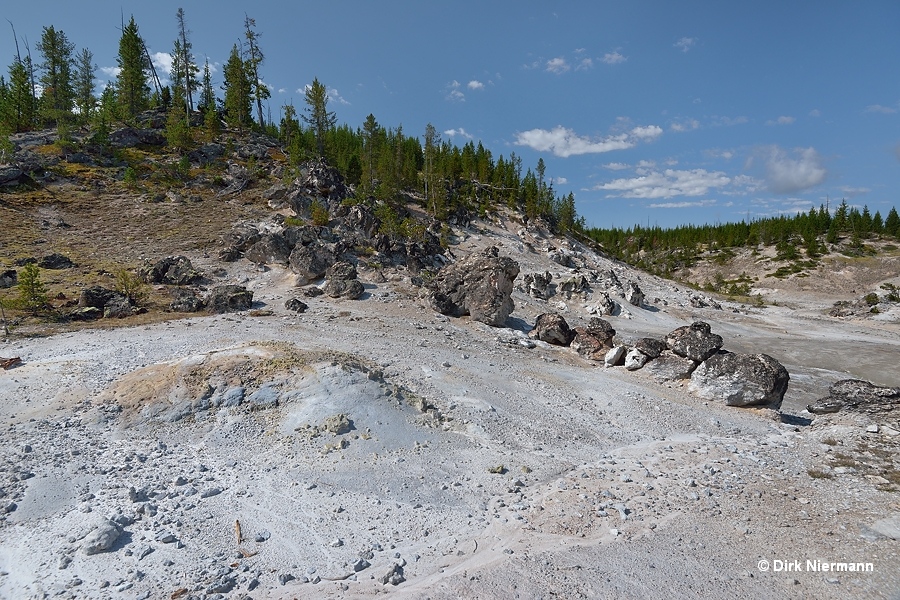
Hiking together with an experienced guide is recommended because you’ll see your destination not until you have reached the rim of Geyser Creek Canyon. Also for safety reasons in the thermal area it is always a good idea to have someone in the party who is familiar with the place. Especially the canyon floor is home of hot springs of all sizes. Many of them are featuring overhanging rims or are entirely covered with thin sinter crust. Therefore, on location you should avoid to walk on the instable canyon floor and move only along the hillsides. A thermal burn is always a serious issue, and bringing an injured hiker back from this all but inaccessible area would require tremendous effort.
Since there is no trail, every hiker may enter the canyon at a different spot. For this reason, I will present the most noticeable features from north to south. The identification of unnamed features of Geyser Creek Group is not so easy, because in this case the RCN database doesn't provide any comparison images and the position data of most springs seem to be not very accurate.
Geyser Creek canyon divides into three sections, the "Lower Basin" in the north, the smaller "Upper Basin" in center, and a narrow ravine in the south. This first page deals with the features of Lower Basin.
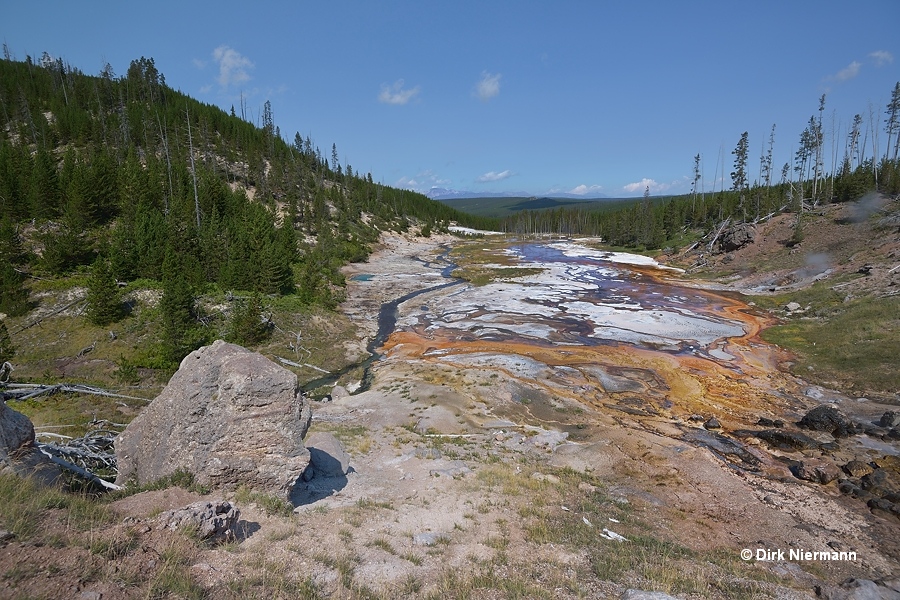
The Lower Basin comprises a few prominent features, but the majority doesn't carry names and is hardly known to a wider public. GGSNN066, a large, slightly bubbling opalescent pool, is one of the northernmost springs.
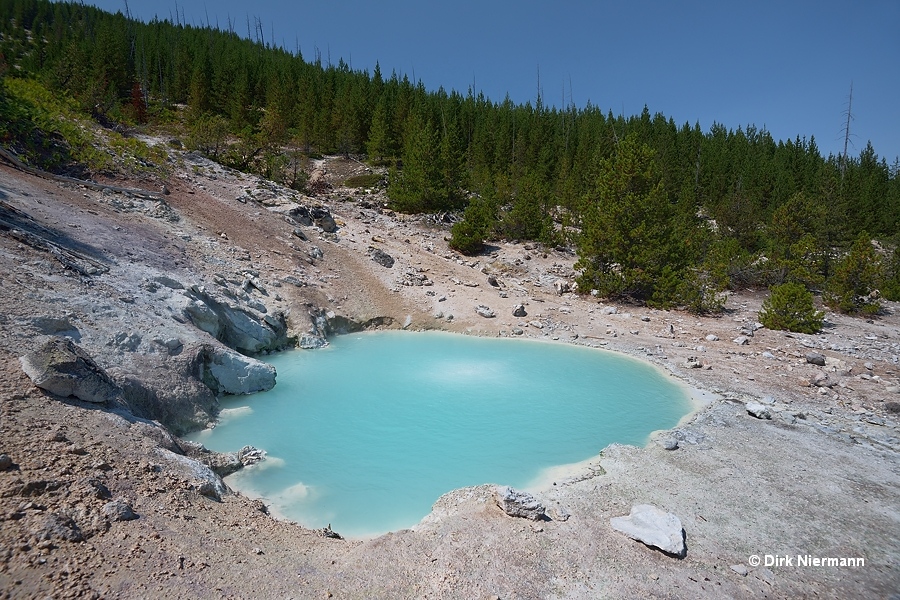
A short distance southeast of GGSNN066 two very active spouters are to be found. GGSNN065 shows nearly perpetual spouting with an interval of a few seconds. The color pattern of the pool is quite special, since the current from the vent generates a purple shade around the emission spot of the small waterdome.
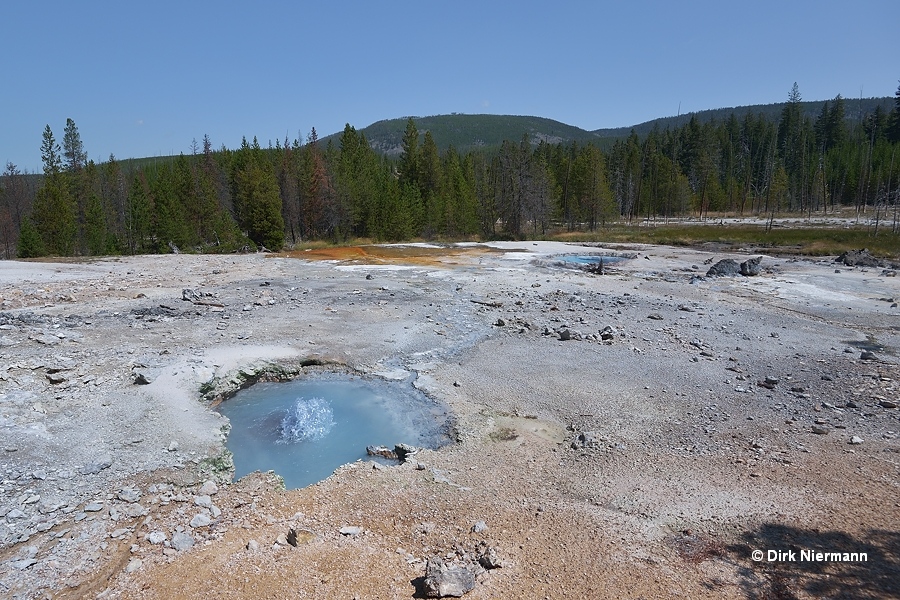
Some feet farther south GGSNN064, a slightly larger, but in terms of color and interval rather similar spouter shows up. The small pool beyond GGSNN064 next to Geyser Creek is home of the dormant Anthill Geyser. However, its weathered sinter cone on the near side of the pools rim is hard to spot in the photo.
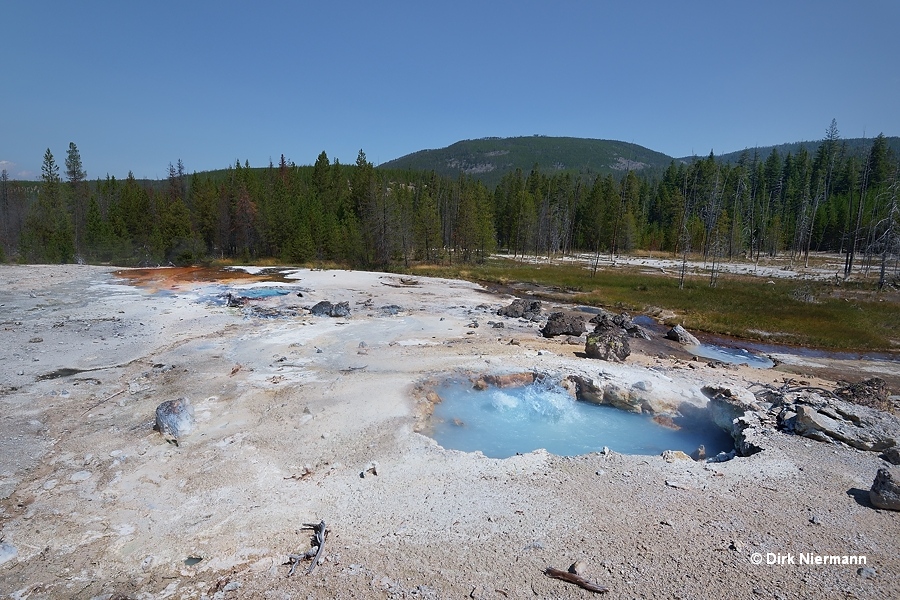
Beyond the two opalescent pools Bull's Eye Spring is located. On rare occasions it may act as a geyser with low eruption height.
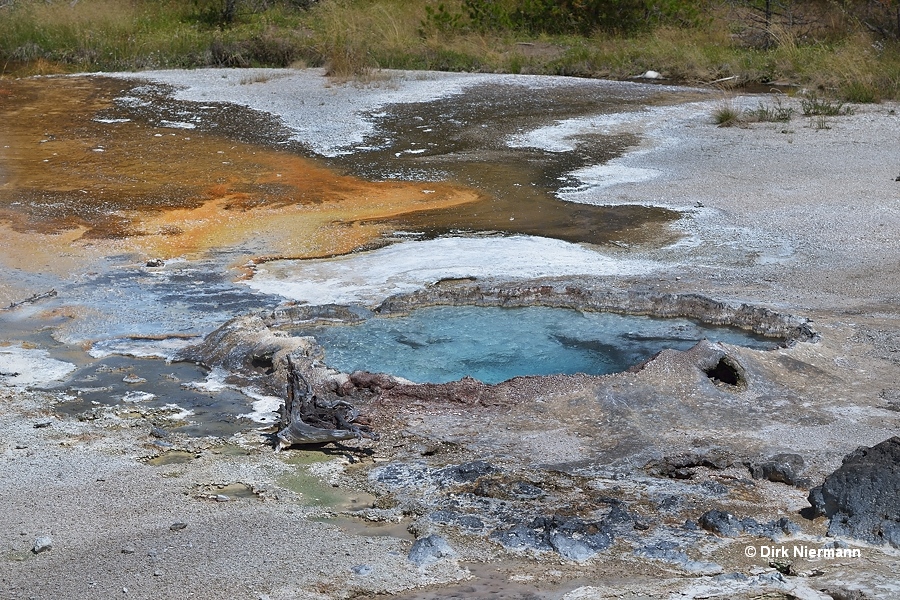
Following Geyser Creek along the western canyon slope farther upstream (south), you come across the two small perpetual spouters GGSNN057 and GGSNN055, subsequently.
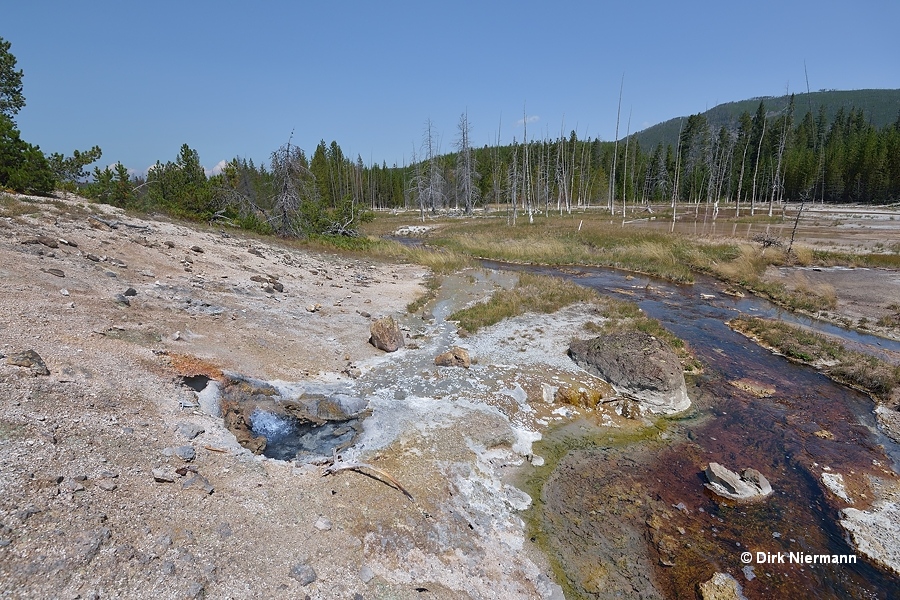
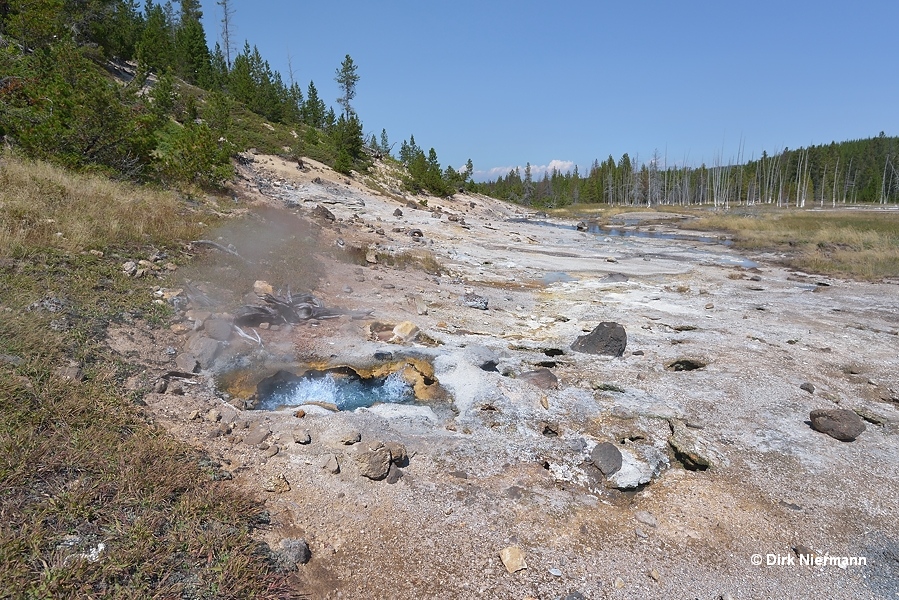
Across Geyser Creek from spouter GGSNN057 a somewhat larger dark pool is located. T. Scott Bryan mentions it as the occasionally active geyser UNNG-GIB-8, whereas it is marked as GGSNN040 in the RCN database.
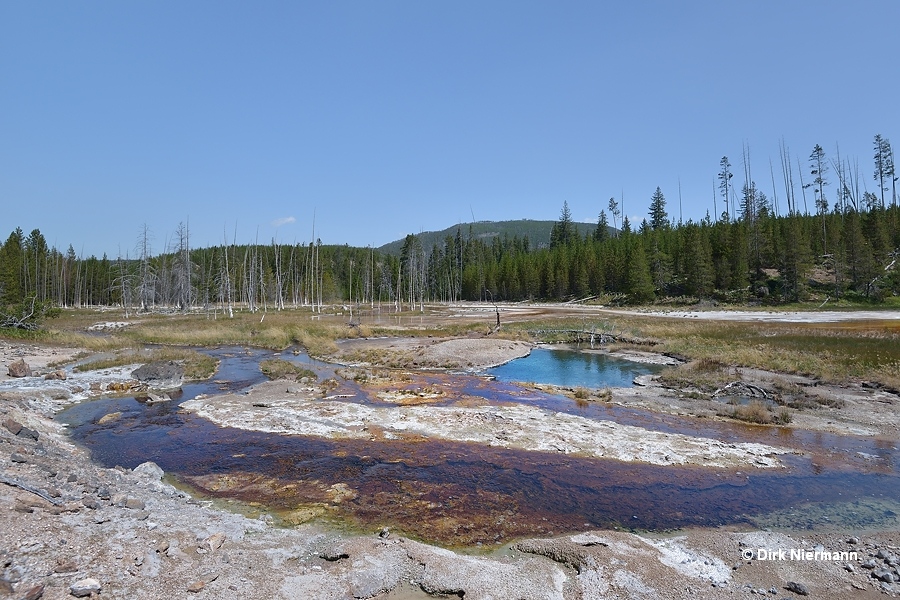
In contrast, Bone Pool, a short distance south of GGSNN040, has no known history as geyser. I'm not sure about the reason for its name, but when you look at its wide overhanging, paper-thin rim it becomes obvious that this beautiful pool is a deadly trap for any approaching larger creature.
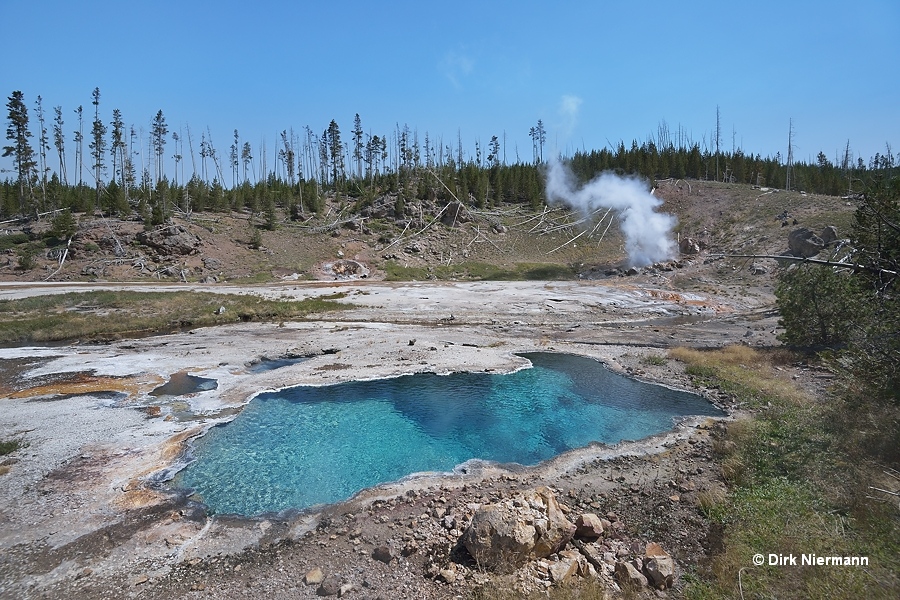
The two most prominent features, Avalanche Geyser and Big Bowl Geyser, are located near the south end of Lower Basin along the east slope of the canyon. According to T. Scott Bryan, Avalanche Geyser, officially named Oblique Geyser, spouts out of at least seventeen vents, each jetting into a different direction. However, this is hard to verify because the eruptions of Avalanche are going along with massive steam emissions. Only if the wind blows the steam aside, as to be seen in the photo, you get a glimpse of the single water jets. Avalanche Geyser erupts at an interval of close to 9 minutes for approximately 3 minutes. The largest jets may reach a height of 7 m (23 feet).
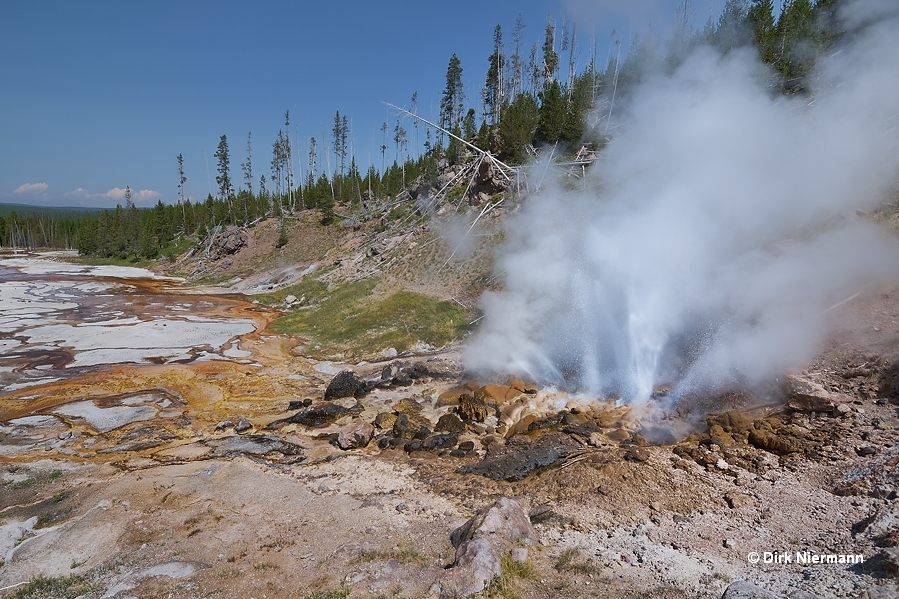
An avalanche is a good comparison for the loose aggregations of boulders covering its central duct.
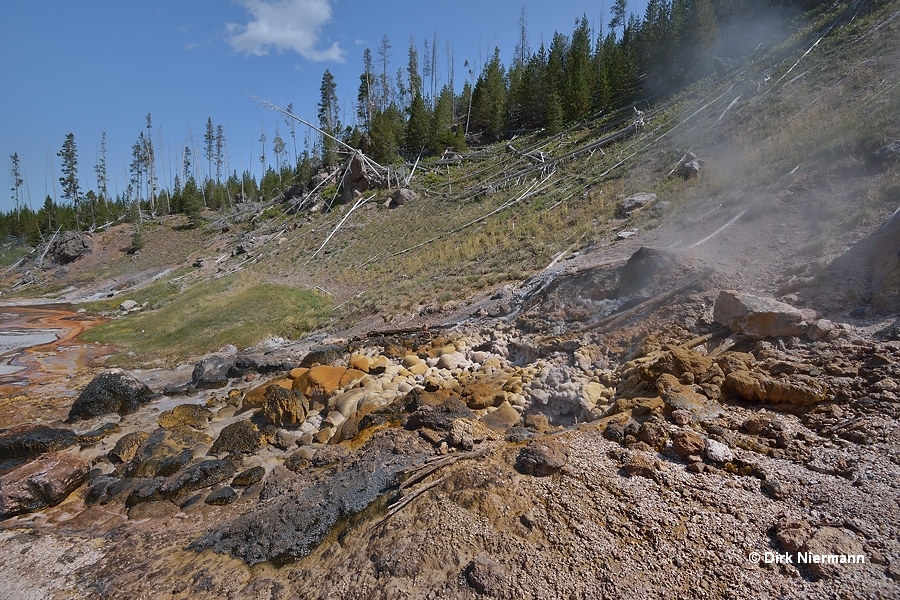
50 m (55 yards) north of Avalanche Geyser the mighty crater of Big Bowl Geyser appears. Its spouting activity is near constant with intervals in the range of a few seconds. The heights of the eruptions are very different, from splashes hardly surpassing the rim up to jets reaching 7 m (23 feet) and more. The general rule about the frequency of larger jets is: if you wait for one, it doesn't come.
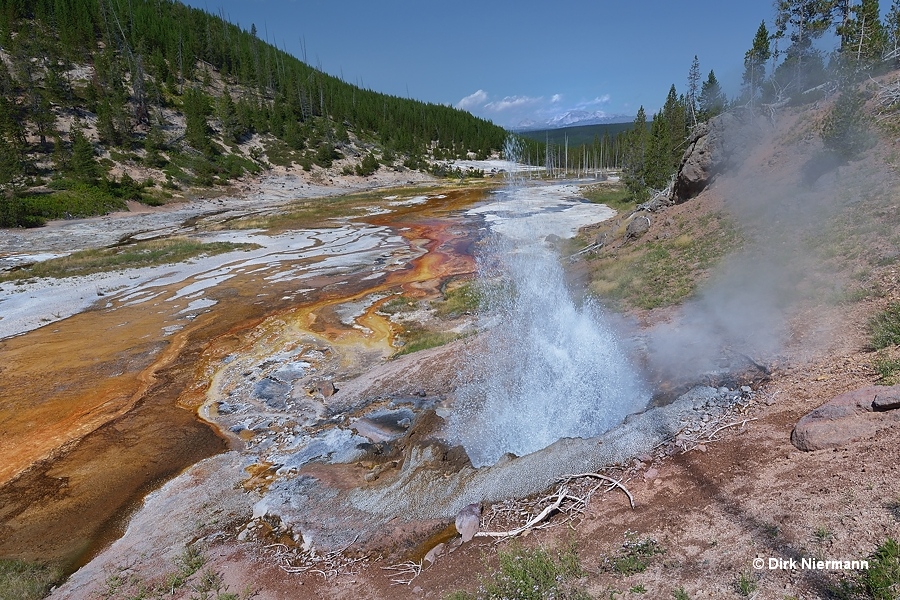
The crater of Big Bowl Geyser shows an extraordinarily rich ornamentation with geyserite beads of all sizes. This gave rise to its second name Necklace Geyser. If you look very closely at the vent, you may spot the remarkably snow-white inner lining.
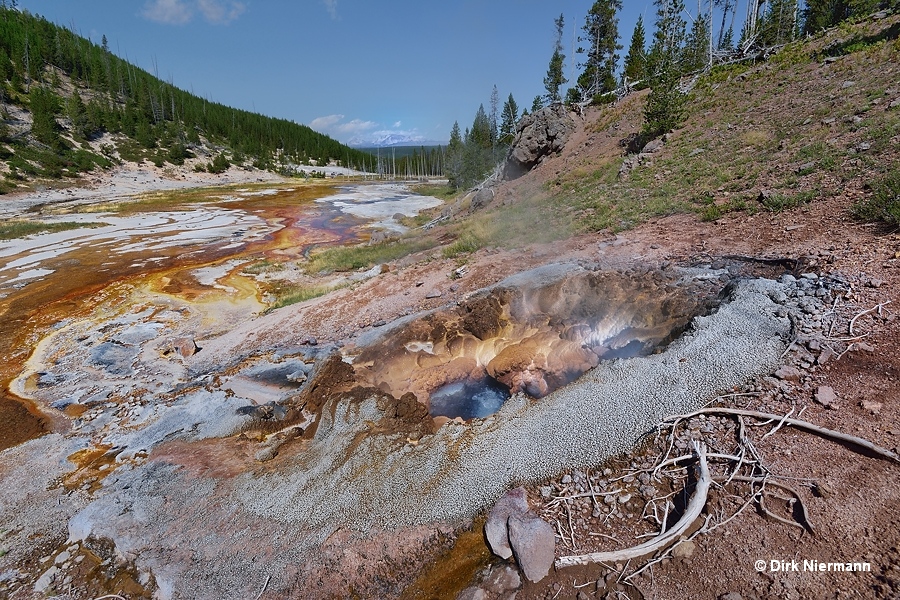
North of Big Bowl Geyser, only a few feet away, a smaller perpetual spouter adjoins. GGSNN036 creates the impression that he is the little brother of the big guy next to him.
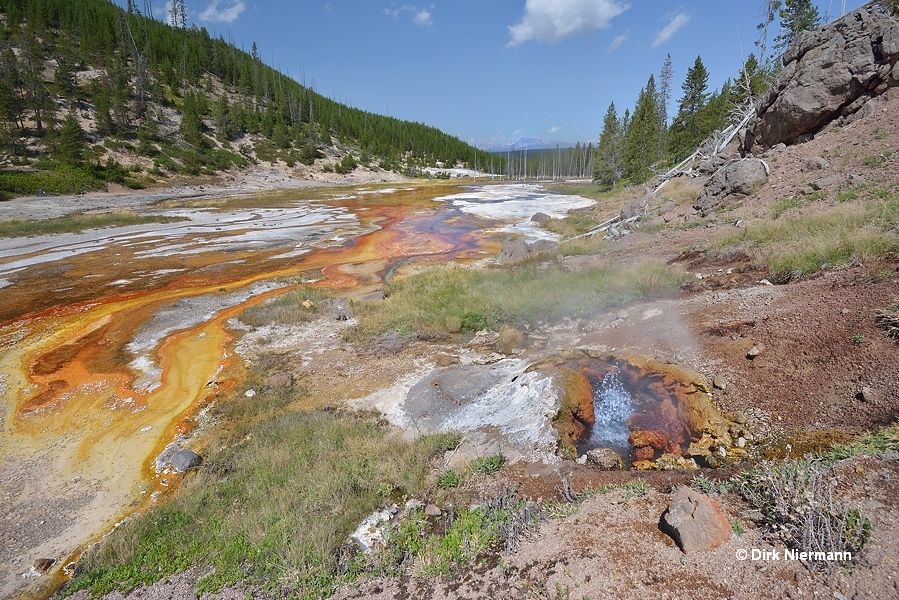
Page 1 2